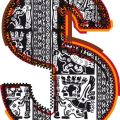1. Introduction: The Cosmic Web of Karma
In the sacred teachings of the Vedas, the universe is perceived as a grand tapestry where every soul (atman) is intricately woven through the threads of karma. This cosmic web is not merely a spiritual concept, but a living reality that shapes each individuals journey through cycles of birth and rebirth. According to Sanatana Dharma, karma refers to the sum total of ones actions, thoughts, and intentions—each generating a ripple effect that determines future experiences of joy, sorrow, health, and disease. Yet, karma does not operate in isolation; its unfolding is powerfully influenced by the celestial energies of the grahas (planets). In Jyotish Shastra (Vedic astrology), the nine grahas are revered as divine agents who manifest the fruits of our past deeds onto the canvas of this lifetime. Their positioning at the moment of birth forms a unique karmic blueprint, guiding our destiny with precision. Thus, understanding how karma binds the atman and how planetary influences shape our earthly existence is essential for spiritual seekers aiming to transcend suffering and realize their highest potential.
2. Grahas: Heavenly Bodies as Agents of Karma
In the sacred tradition of Jyotish Shastra, the grahas—commonly known as planets—are revered as cosmic agents channeling the fruits of karma onto the canvas of human life. Each graha embodies a unique divine force, influencing destinies, joys (sukha), and sorrows (dukha) as ordained by ones past actions (karma). The Rishis have described these heavenly bodies not merely as celestial objects, but as conscious instruments through which the intricate web of karmic law is woven and manifested.
The nine principal grahas—Surya (Sun), Chandra (Moon), Mangal (Mars), Budh (Mercury), Guru (Jupiter), Shukra (Venus), Shani (Saturn), Rahu, and Ketu—each govern distinct spheres of experience, virtues, and challenges. Their placement in one’s janma kundali (natal chart) reveals the blueprint of sukha and dukha destined for this birth. Through their drishti (aspect) and sambandha (relationship) with various bhavas (houses) and rashis (signs), the grahas orchestrate both external events and internal states.
| Graha | Presiding Deity | Main Karaka (Signification) | Associated Joys & Sorrows |
|---|---|---|---|
| Surya (Sun) | Surya Narayana | Soul, Authority | Success, pride, ego struggles |
| Chandra (Moon) | Chandrama | Mental peace, Motherhood | Mental calm or anxiety, emotional fulfillment or unrest |
| Mangal (Mars) | Kartikeya | Courage, Energy | Victory, aggression, conflicts |
| Budh (Mercury) | Narayana as Vishnu | Intellect, Communication | Wisdom, misunderstandings |
| Guru (Jupiter) | Brihaspati | Wisdom, Expansion | Blessings, overindulgence |
| Shukra (Venus) | Shukracharya | Loving relationships, Comforts | Pleasure, attachments, disappointments in love |
| Shani (Saturn) | Shani Dev | Karma, Discipline | Suffering for purification, perseverance rewards |
| Rahu | Swarbhanu | Desires, Illusions | Sudden gains/losses, confusion |
| Ketu | Dhwaja/Flag Symbolism | Moksha, Detachment | Liberation from material bonds or loss of direction |
The interplay of these grahas reflects not only the visible fruits of karma but also subtle shifts within the antahkarana—the inner instrument consisting of mind and heart. As taught in Upanishadic wisdom and reiterated in classical texts like Brihat Parashara Hora Shastra, understanding each graha’s influence enables one to interpret how past karmas unfold as present joys and sorrows. Thus, the navagrahas are not just planetary energies; they are living manifestations of Ishvara’s will guiding each jivatma on its journey towards self-realization.

3. Diseases and Afflictions: The Karmic Triggers
In the sacred tradition of Jyotish Shastra, the intricate connection between karma and the grahas (planets) is deeply revered. It is believed that the ailments and afflictions we encounter in this janma (current birth) are not mere coincidences, but manifestations of our past life karmas—actions performed with intention, whether righteous or otherwise. The planets act as divine messengers, reflecting the fruits of these actions through their positions and aspects at the time of our birth.
The Interplay of Grahas and Roga
When certain grahas occupy malefic houses or associate with papagrahas (malefic planets), they can trigger diseases (roga) as per the ripening of specific karmas. For instance, Shani (Saturn), known for delivering justice, may bring chronic ailments when afflicted or placed in dushtana bhavas (6th, 8th, or 12th houses). Similarly, Rahu and Ketu—shadow planets representing our karmic knots—may cause mysterious or sudden illnesses whose roots often defy modern medical explanation. These planetary influences reveal the hidden debts and lessons that our soul must face and resolve in this lifetime.
Karmic Patterns and Health Challenges
The Vedic seers teach us that health challenges are opportunities for purification and spiritual growth. Each disease carries a message from Ishvara (the Divine), urging us to introspect on our past deeds and embrace dharma in thought, word, and action. It is said that by understanding one’s own horoscope—especially the strength and placement of lagnesh (ascendant lord) and Chandra (Moon)—one can discern both the origin and remedy for many afflictions. Thus, astrology becomes not just a predictive tool but a map for inner transformation.
Remedies Rooted in Tradition
Our ancient rishis prescribed various upayas (remedial measures) such as mantra chanting, daan (charity), fasting on auspicious days, and propitiation of specific grahas to alleviate suffering caused by adverse karmas. Engaging in seva (selfless service) and cultivating sattvic qualities are also recommended to harmonize one’s energies with cosmic order. In this way, awareness of planetary effects serves not only to explain life’s difficulties but also to inspire conscious actions that balance the scales of karma and promote holistic well-being.
4. Boons and Joys: Graha Drishti on Blessings
In the sacred Vedic tradition, it is taught that the gaze (drishti) of planets upon each other in the natal chart can act as a celestial benediction, shaping the karma phala—the fruits of ones past actions—into tangible blessings. When auspicious grahas such as Guru (Jupiter), Shukra (Venus), or Chandra (Moon) cast their benefic drishti, they activate yogas that bestow prosperity, joy, and spiritual elevation. These planetary alignments are highly revered in Indian culture, where every significant event—from marriage to childbirth—is often timed with muhurta, considering the most favorable planetary influences.
Understanding Auspicious Drishti and Yogas
Auspicious planetary aspects create a harmonious vibration in one’s life journey. When strong benefic grahas aspect key houses—such as the Lagna (ascendant), 4th house (happiness), 5th house (intelligence and progeny), 7th house (partnerships), and 9th house (fortune)—they bring forth blessings that manifest as both material gains and inner contentment.
Major Prosperity-Yielding Yogas
| Yoga Name | Planets Involved | Blessings Bestowed |
|---|---|---|
| Dhan Yoga | Lords of 2nd & 11th Houses | Financial prosperity, accumulation of wealth |
| Gaja Kesari Yoga | Jupiter & Moon conjunction/quadrant | Name, fame, intelligence, happiness |
| Raj Yoga | Lords of Kendra & Trikona houses united/associated | Leadership, authority, high status |
| Maha Purusha Yoga | Mars, Mercury, Jupiter, Venus or Saturn in own/exalted sign in Kendra | Exceptional talent, success in chosen field |
| Kahala Yoga | Lords of 4th & 9th houses associated with Lagna lord | Courage, happiness from home/family life |
The Blessings of Graha Drishti: A Divine Perspective
According to ancient rishis and jyotish shastra, when benefic grahas exert their compassionate drishti upon sensitive points in the birth chart, one experiences moments of ananda (bliss), auspicious ceremonies like griha pravesh (housewarming), vivaha (marriage), or vidyarambham (initiation into learning). Such periods are marked by harmony in relationships, fulfillment of desires, and spiritual progress—a manifestation of positive karma fructifying under divine guidance.
It is common in Indian homes to consult a learned jyotishi for finding these opportune windows when planetary grace is at its peak. Through remedies such as mantra japa, daan (charity), and yajnas (fire rituals), devotees invoke further blessings from the grahas to enhance these boons and ensure the unbroken flow of joy and abundance through their karmic journey.
5. Remedies and Pathways: Neutralizing Doshas
Understanding the Vedic Approach to Healing Karma and Graha Influences
In the sacred traditions of Bharat, the seers have always emphasized that while karmic debts must be honored, the compassionate shastras also provide us with upayas—remedial pathways—to neutralize doshas arising from malefic planetary influences. Our rishis observed that through sincere efforts rooted in faith and discipline, one can pacify the adverse effects of planets (grahas) and purify one’s karma. Let us explore some of the most revered remedies as described in classical jyotish and Vedic texts.
Mantra Japa: Invoking Divine Vibrations
The recitation (japa) of specific mantras is prescribed for each graha to appease their energies. For example, chanting the Surya Gayatri or Aditya Hridayam bestows relief from Sun-related afflictions, while the Mahamrityunjaya mantra is potent against Saturn (Shani) doshas. The sound vibrations align the subtle body with cosmic frequencies, gradually dissolving negative karmic residues.
Daan: Charity as a Karmic Cleanser
Charity (daan) holds a special place in Sanatana Dharma. Offering grains, clothes, or metals related to afflicted planets—like donating black sesame for Shani or white rice for Chandra—can help alleviate suffering. The Bhagavad Gita proclaims, “Daanam bhavati paavanam”—charity purifies both giver and receiver, thus transforming sorrow into joy by balancing our karmic ledger.
Puja & Vrata: Rituals for Graha Shanti
Performing pujas and observing fasts (vrats) on auspicious days dedicated to particular planets is another powerful remedial measure. Navagraha puja, Rudrabhishek for Mercury (Budh), or Mangalwar vrat for Mars (Mangal) are common practices in Indian households. These rituals create positive vibrations in one’s aura and environment, inviting grace and protection from planetary turbulence.
Integrating Remedies into Daily Life
The path to overcoming planetary afflictions lies not just in ritual but also in cultivating inner virtues—humility, truthfulness, patience, and compassion—as prescribed by dharma. When remedies are performed with shraddha (devotion) and samarpana (surrender), they become potent tools for realigning our karma with cosmic order. Thus, through disciplined practice of mantra japa, daan, puja, and vrata, we awaken the possibility of healing diseases, dissolving sorrows, and inviting ananda (bliss) into our lives under the watchful gaze of the navagrahas.
6. Indian Perspectives and Cultural Context
Embracing Traditional Wisdom in Karmic Interpretation
Within the sacred landscape of Bharatiya (Indian) thought, the interplay between karma and grahas is not merely a subject of intellectual inquiry but forms the foundation of daily life and spiritual practice. The ancient rishis perceived that the planets, or navagrahas, are divine instruments reflecting the fruits of our past actions—both punya (merit) and papa (demerit)—through joy, sorrow, health, or disease. This understanding invites us to approach lifes circumstances not as random events but as opportunities for self-transformation and spiritual growth.
The Role of Devotional Practices (Bhakti & Upasana)
Integral to Indian tradition is the practice of devotion (bhakti), rituals, and upasana (worship) directed toward planetary deities. Temples dedicated to Surya (Sun), Chandra (Moon), Shani (Saturn), and other grahas are found throughout Bharat, where individuals seek guidance and relief from adverse planetary effects through puja, mantra chanting, fasting, and offering alms. These practices are believed to mitigate karmic burdens, balance planetary energies, and foster inner peace.
Local Wisdom: Community & Ayurveda
India’s regional diversity offers a wealth of local wisdom in harmonizing with planetary influences. In many families, elders consult astrologers before major life events—marriage, childbirth, or new ventures—to align actions with auspicious planetary periods (muhurta). Ayurveda, India’s holistic science of life, also considers planetary positions when diagnosing diseases or prescribing remedies. By integrating these traditions, individuals cultivate resilience and harmony amidst lifes changing fortunes.
Synthesis: Living in Alignment with Cosmic Order
Ultimately, the Indian approach is one of synthesis—blending Vedic astrology (Jyotisha), karmic philosophy, ritual worship, and practical wisdom. This integration enables seekers to transcend fatalism by participating actively in their own destiny through conscious living and spiritual discipline. By honoring both the visible effects of the grahas and the invisible workings of karma, we are reminded that every moment offers a chance for purification and upliftment on our journey toward moksha (liberation).


